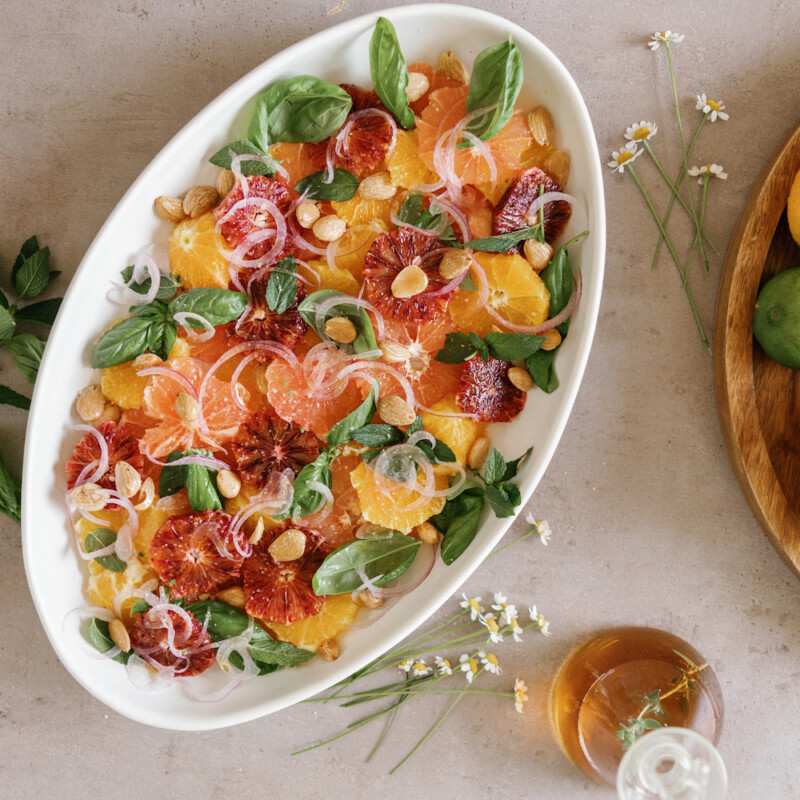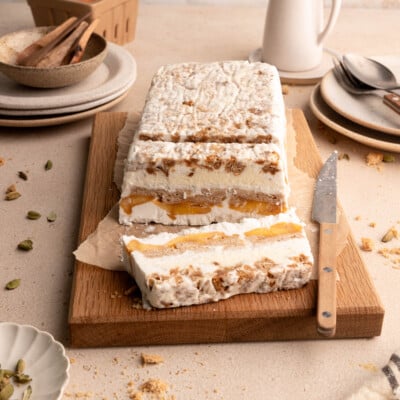Do you feel it? That tiny twinge of fall that’s already in the air—its barely-there fragrance on my morning walks around the neighborhood, the twinge of excitement I feel when I think about pumpkin recipes, soft sweaters, cozy candles, and sweet relief from the intense heat of a Texas summer.
The turning of each season is a fresh opportunity to hit pause on all the rushing around, step out of fight-or-flight mode, and take a breath. It’s a chance to think about the simple pleasures that we hope to enjoy in the season ahead. As we enter this in-between season, you may be wondering what’s in season in September. Well, get excited, because the bounty of late summer produce is the perfect jumping-off point for all those cozy recipes we associate with fall. Read on for my guide to what’s in season in September—plus 9 simple, delicious dinners to cook with it this month.

image: michelle nash for our interview with jessie and brian de lowe
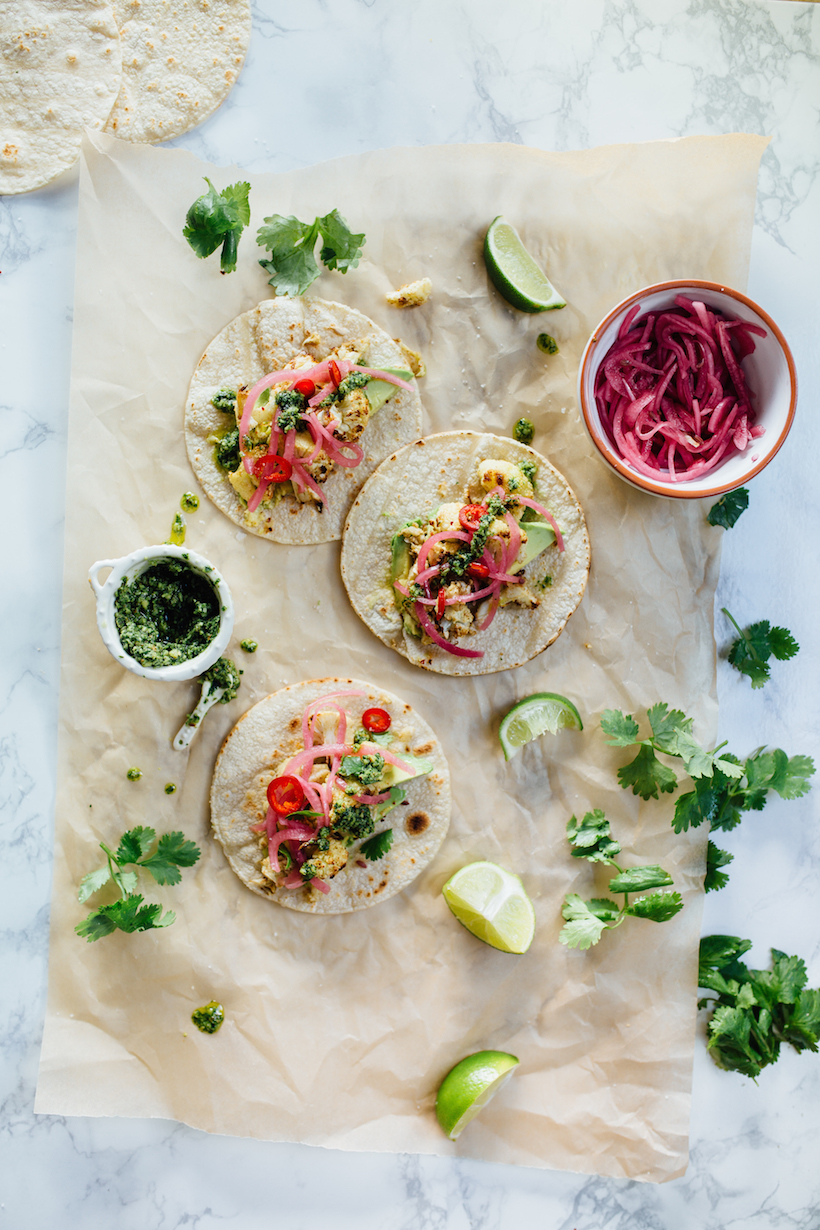
Cauliflower
How to choose:
Look for cauliflower heads that are tightly closed and firm. At farmer’s markets and many grocery stores, you can find heirloom varieties that have insanely good texture and flavor. My favorites are orange cauliflower, or its cousin Romanesco.
What to make:
Roasted Cauliflower Tacos with Cilantro Pesto
Vegan, gluten-free, and packed with veggie goodness, these roasted cauliflower tacos are nothing short of amazing. The seasoned cauliflower gets kissed with a little oven char, wrapped up in warm corn tortillas, and drizzled with a cilantro pesto that’s good enough to drink—seriously. Not to mention some top-tier edible accessories to finish it off (think pickled red onion, cilantro, sliced jalapeños, etc, etc.) The best part? If you’re making these tacos for a crowd, you can prep everything in advance and let it hang out at room temp until it’s time to serve.
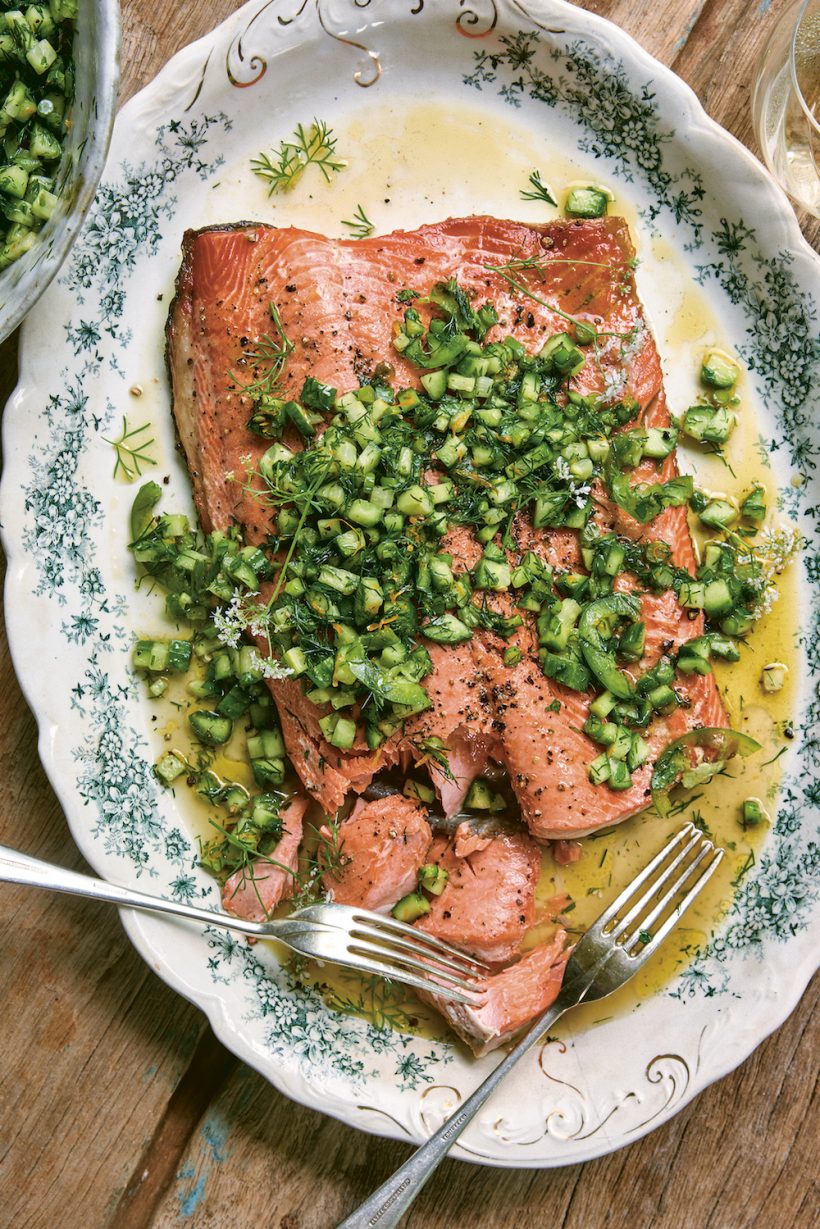
Cucumbers
How to choose:
Cucumbers are best when they’re firm and spotless. Look for cucumbers that are a lively, dark green color and without blemishes or soft spots. A deep green color indicates peak freshness, so avoid cucumbers with yellow spots—as these can indicate over-ripeness.
What to make:
Roasted Salmon with Spicy Cucumber-Orange Salsa
Perfectly cooked salmon is only enhanced by the spicy cucumber-orange salsa that accompanies it. The cool cucumber cubes are flavored by fresh dill, briny fish sauce, and vibrant orange zest to make a salsa that’s bursting with end-of-summer charm.
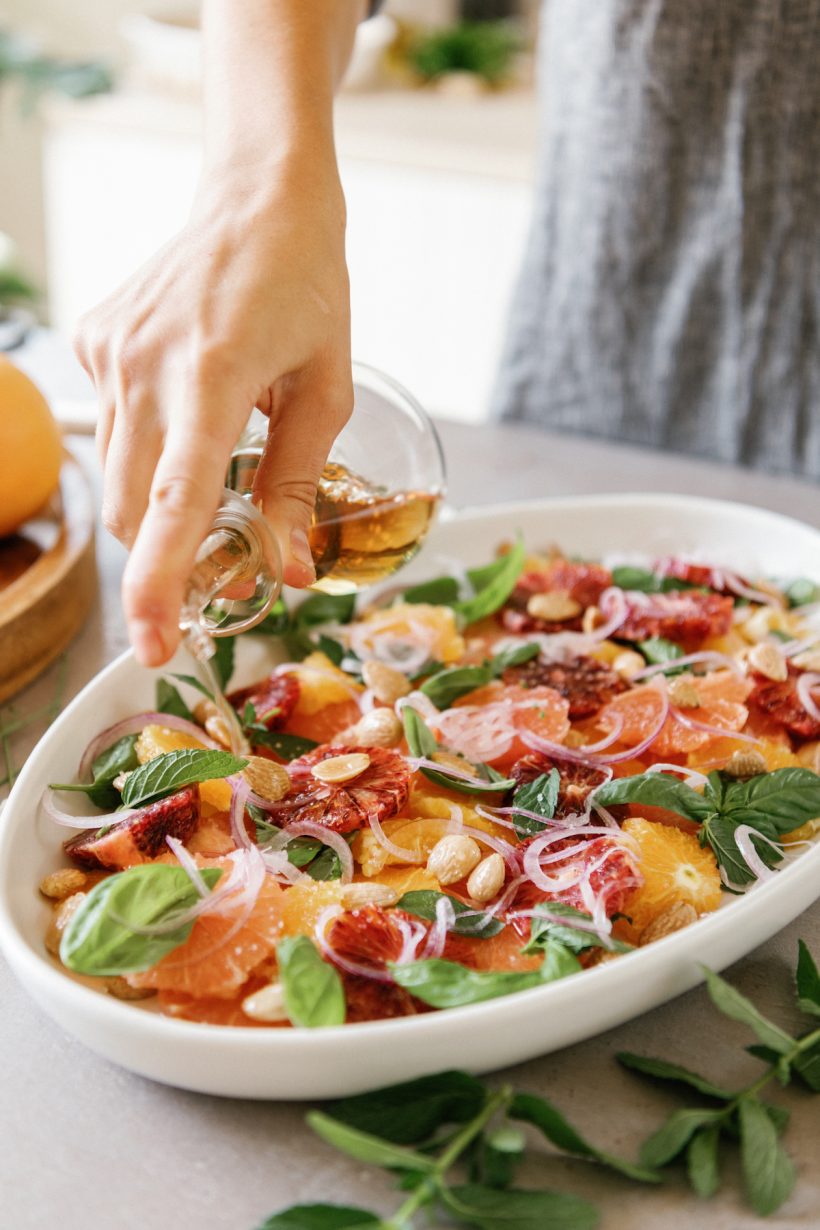
Navel Oranges
How to choose:
A ripe naval orange should feel heavy when you pick it up. Weight can be a key indicator of how juicy an orange is, so a heavier orange is a good sign of juiciness and flavor. Naval oranges should also have a solid skin, as the skin can indicate how firm the flesh is inside. Avoid any oranges with soft or decaying skin as these signs can indicate decay on the inside. A naval orange should also smell like an orange! Anything else and you’re entering overripe territory.
What to make:
Simple Citrus Salad
Bursting with citrusy freshness, this simple citrus salad is the perfect palette cleanser for any occasion. Juicy citrus slices meet salty marcona almonds, sharp red onion, fresh basil, and a generous dose of EVOO to create something so much greater than the sum of its parts. It’s light, refreshing, full of flavor, and almost guaranteed to put a smile on your face.
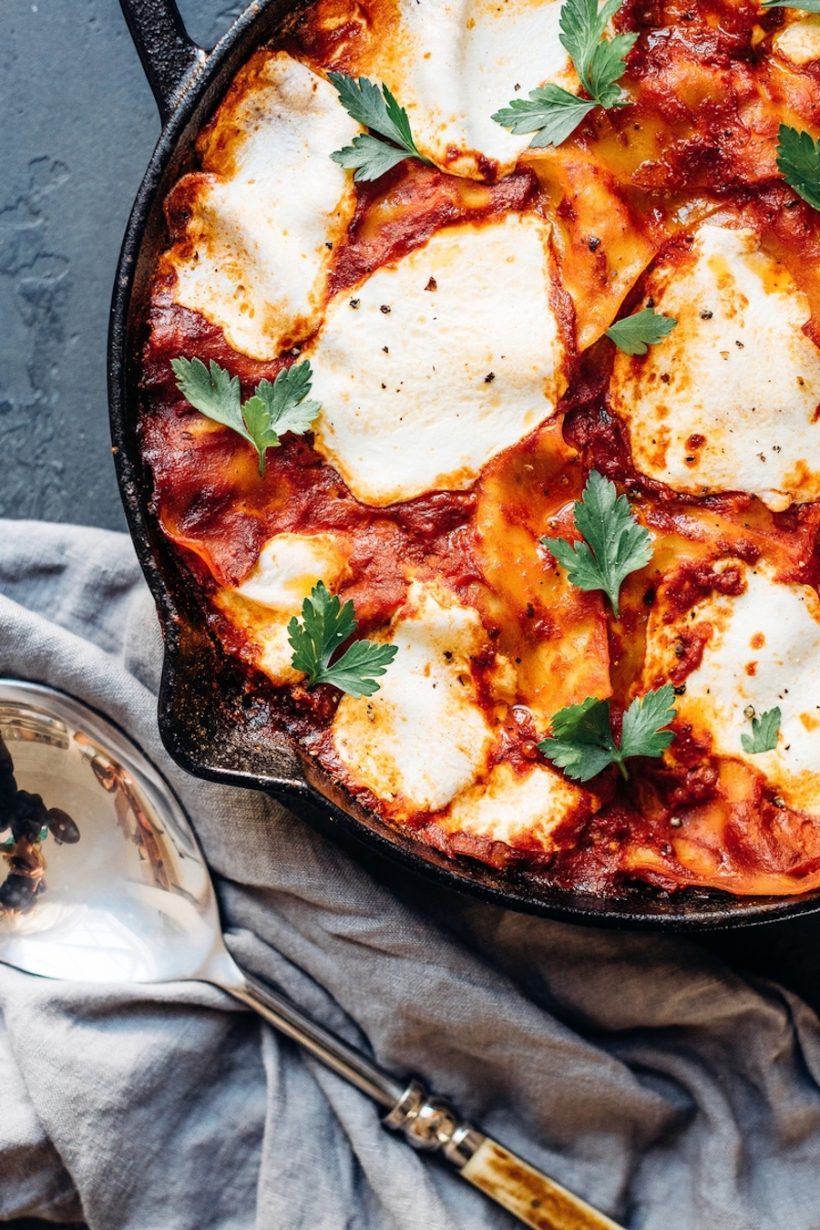
Eggplant
How to choose:
Like oranges, eggplant should feel heavy for its size. Its skin should be vibrant, as smooth as possible, and have a good shine to it. Wrinkled skin can indicate age and thus bitterness as older eggplant tends to be more bitter. The stem should be green, which is a good sign that it was recently harvested. Eggplant should also be firm, but give a slight bounce to show it’s fresh and ready for use.
What to make:
Skillet Eggplant Lasagna
Skillet eggplant lasagna was practically made for cozy nights. For starters, it’s a one-pan wonder that makes cleanup that much easier, and it puts a healthier spin on traditional lasagna without sacrificing any of its comforting qualities. Eggplant and spinach introduce a veggie component to a dish normally loaded with carbs, though they still retain all of the cheesy, tomato-y goodness of traditional lasagna that’s patiently waiting in the wings to satisfy your craving. Skip the carbatose by giving this vegetarian variety a try—you won’t regret it!
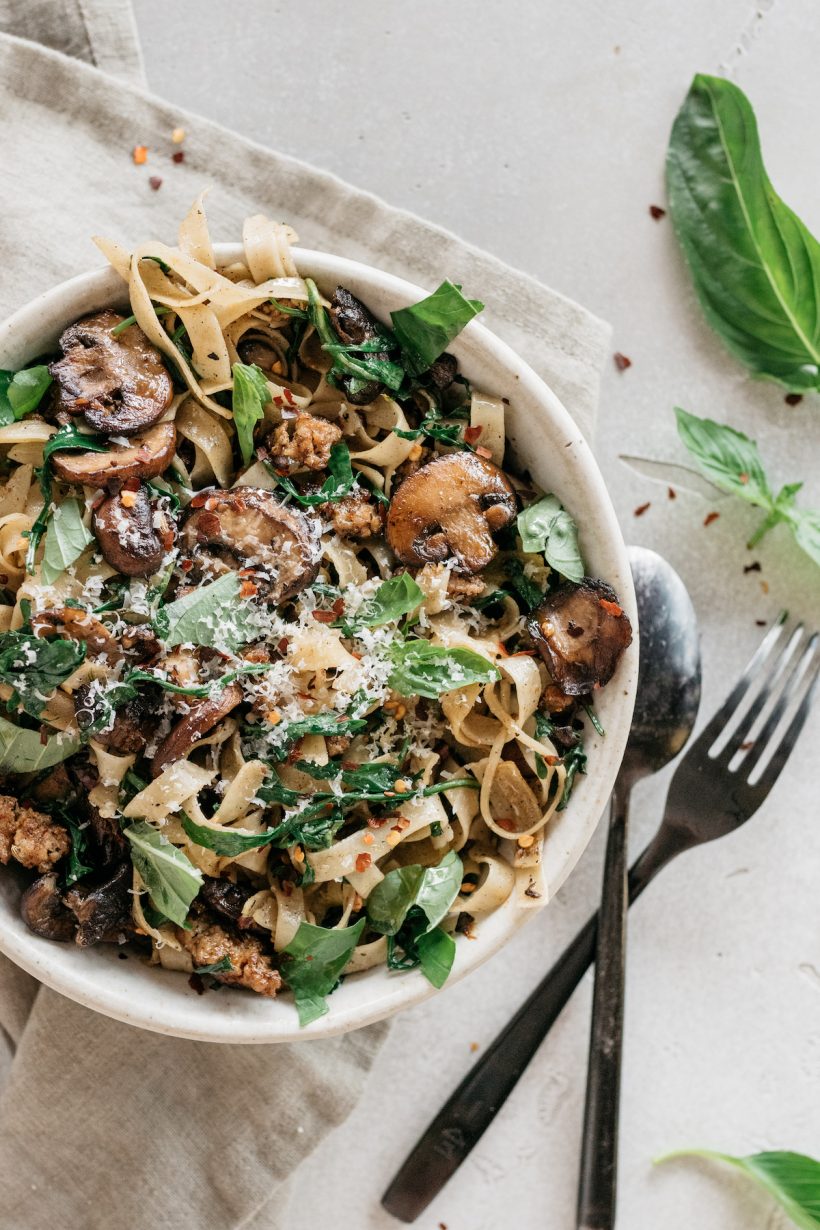
Mushrooms
How to choose:
Who else has bought a carton of mushrooms only to pull them out a week later covered in greyish-brown sliminess? Because same. That’s why knowing how to find the freshest mushrooms will help them last longer in the fridge and give you more time to use them. What to look for? Mushrooms should be firm, smooth, and dry. Slimy mushrooms don’t give you much of an opportunity to use them before entering the goo stage, so avoid those. When it comes to packaged or loose mushrooms, you can’t go wrong with either. Loose mushrooms give you a closer look at each ‘shroom individually, but packaged work just fine, too.
What to make:
Garlicky Mushroom Pasta with Sausage and Arugula
This yummy pasta, though it does contain meat, is refreshingly veggie-centric. The small bit of Italian sausage gives it a savory meat profile without distracting from the delicious mushrooms and peppery arugula. Plus, the mushrooms are seared instead of steamed, which means each little gem is embellished with a caramelized exterior. I’ve deemed this method as the best way to cook mushrooms, but the only way to find out is to try it out yourself!

Peaches
How to choose:
You’ve seen it and you’ve lived it, but the best way to judge a peach’s ripeness is to give it a gentle squeeze. Peaches that have a slight give are generally the juiciest, sweetest, and most delectable. You might get a few looming glares, but everyone’s in the same boat! Just be sure not to squeeze too hard and bruise those little treasures. Another tip for finding the freshest peaches is to look locally. Local peaches don’t have to travel as far from farm to store, which means less opportunity for bruising and over-ripening. Plus, buying local peaches is a great way to support local farmers, which is never a bad thing.
What to make:
Peach, Pesto, and Balsamic Pizza
Not only is homemade pizza a fun and rewarding cooking project, but this variety with peaches, pesto, and balsamic glaze strikes that perfect balance between sweet and salty elements. Nutty basil pesto meets creamy burrata, fresh herbs, and caramelized end-of-summer peaches. All of that layered flavor atop a crusty pizza dough and red pepper flakes? Yum. To finish it all off, that basil pesto and fresh basil bring in all kinds of herbaceous freshness.
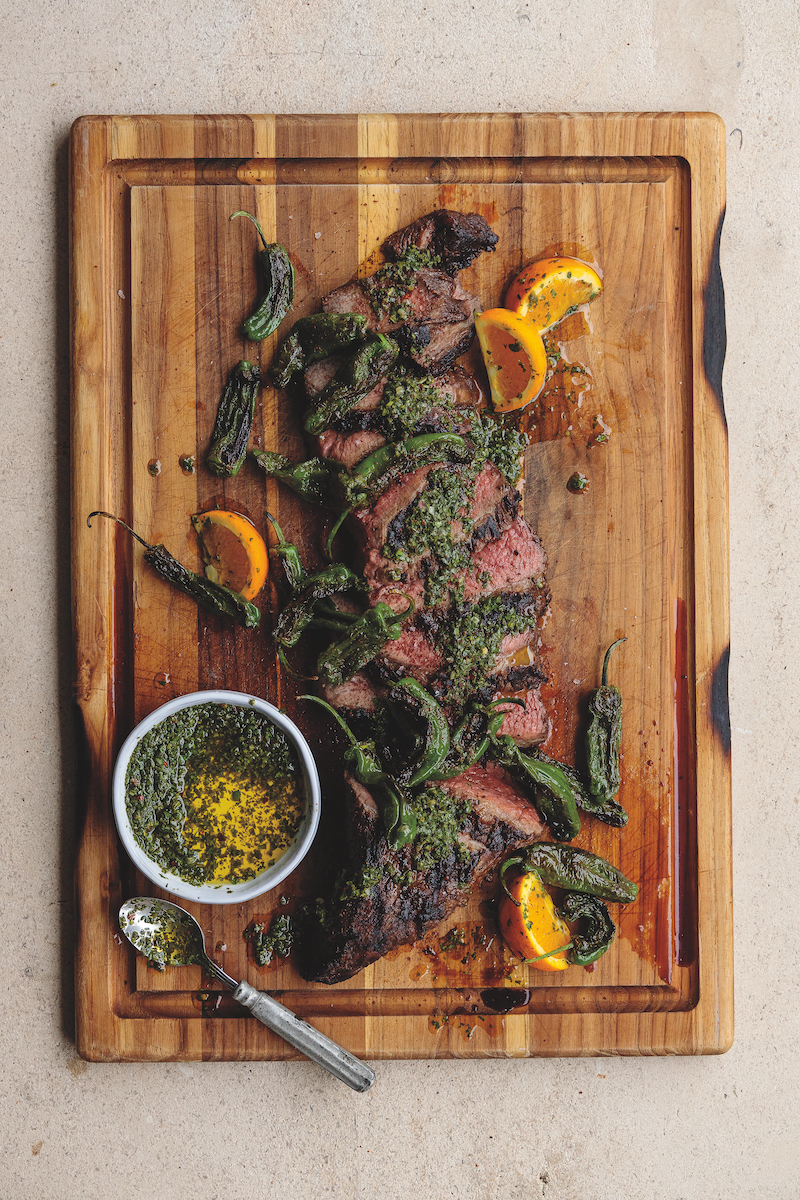
Peppers
How to choose:
Like the others on this list, you’ll want to look for peppers with a firm outer skin. Wrinkling and/or wilting can be a sign of over-ripening. Similarly, the stems on peppers should be sturdy and fresh, as limp stems can also indicate over-ripeness. Peppers should also be on the heavier side. A pepper’s weight is a sign of what’s on the inside—as in fresh seeds and thick walls (yes, please). To recap, look for texture, skin appearance, and weight and you’re good to go!
What to make:
Orange-Marinated Steak with Chimichurri & Padron Peppers
Well-marbled steak gets bathed in orange juice, soy sauce, olive oil, onion, garlic, and chile flakes for a few hours to pull out all that mouthwatering meaty flavor. Then, it hits the grill for a deep sear and caramelized exterior. In terms of steak choice, Valerie Rice used Tri-Tip, but feel free to use this formula on other cuts of steak. It’s beautiful on a skirt steak or New York Strip. Top all of that with blistered peppers seasoned with sumac? Perfection.
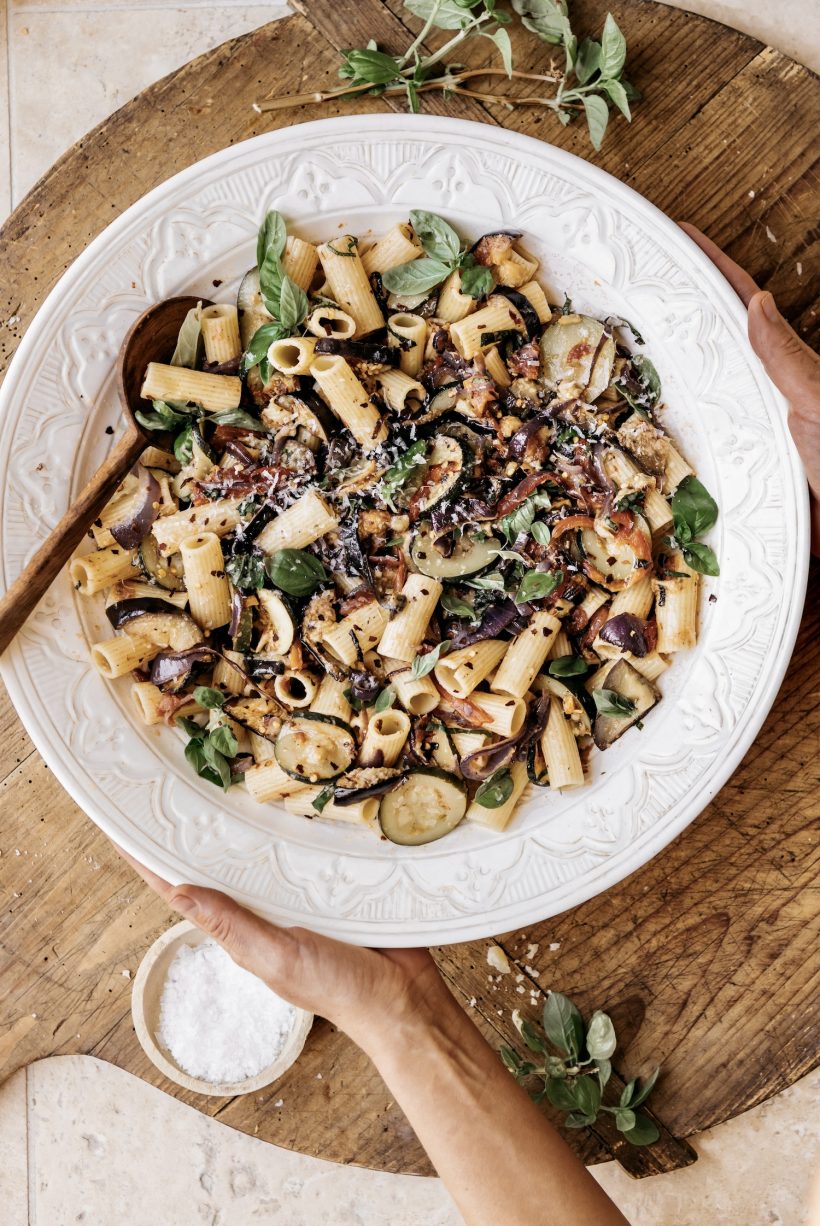
Tomatoes
How to choose:
Tomatoes can be tricky when it comes to choosing the ripest fruits. Like peaches, your best bet is to buy locally-grown tomatoes. They have less distance to travel which means more freshness and less bruising. In terms of color, you’ll want to look for rich, consistent coloring. Tomatoes with yellow or green patches may have been ripened off the vine, which is convenient for shippers, but compromising for flavor. Unlike peaches, however, you don’t have to squeeze a tomato to determine if it’s ripe. A solid tomato will have a good weight, pungent smell, deep color, and smooth skin. And that’s all there is to it!
What to make:
Ratatouille-Style Roasted Vegetable Pasta
Ratatouille, in case you haven’t seen the movie, is a vegetable stew hailing from Provence. It’s a celebration of late-summer, early-fall veggies that are at peak freshness. It’s basically the ultimate September recipe featuring hits like eggplant, zucchini, and peppers. In this recipe, ratatouille undergoes a pasta-esque transformation—resulting in something even better (IMO) than the original. Large rigatoni noodles cooked al-dente and coated in olive oil and parmesan shavings are the ideal vehicle for those roasted veggies. Each bite captures just the right ratio of pasta to vegetable that will keep you coming back for more.
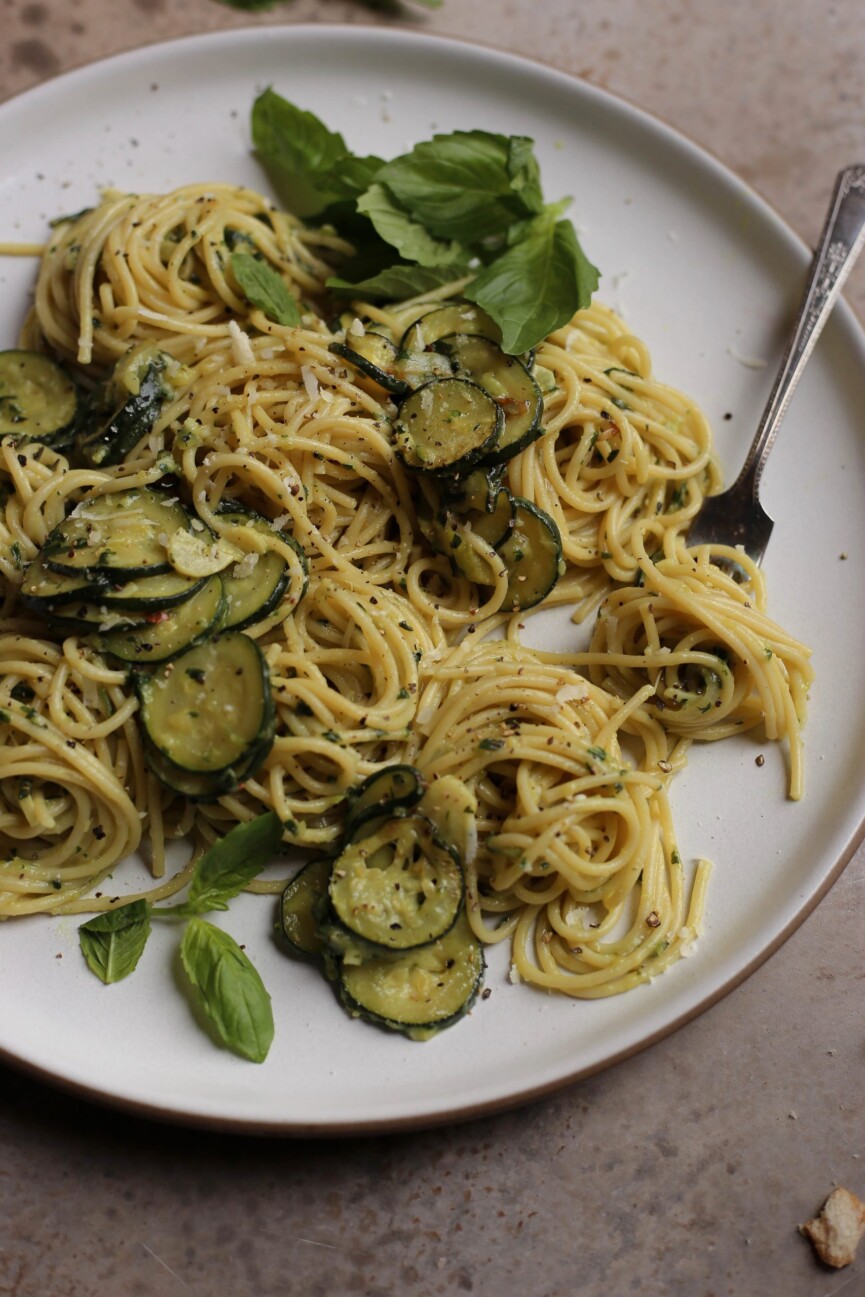
Zucchini
How to choose:
Something important to note about zucchini is that bigger does not equal better. But color does! Look for zucchini that’s vibrant in color—no matter if it’s green, yellow, or white. Stems are also important, as zucchini with stems in-tact will last longer and give you more chances to use it. Back to size, seek out zucchinis that are six to eight inches in length and not overly wide. And like the other produce on this list, the skin should be wrinkle-free and fresh looking.
What to make:
Spaghetti Alla Nerano
This pasta is incredibly simple and definitely lets that sweet zucchini shine. The zucchini gets used in two ways here: one pan-fried with shallots and garlic, and one blended into the sauce surrounding those tasty noodles. The sautéed zucchini is layered over al dente spaghetti with butter, grated parm, fresh basil, and lots of salt and pepper finishing it off. The sauce here is simple—combining that late-summer zucchini flavor with a little pasta water and basil that lovingly coats each spaghetti noodle. It makes a light, easy, and drool worthy dinner that you won’t want to miss out on this September.

